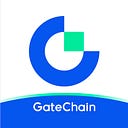
GT (GateToken), one of the most important parts of the GateChain ecosystem, is a secure asset stored on GateChain. It also plays a significant role on Gate.io and is deeply bound to the development of this platform. There was no ICO (Initial Coin Offering), no private token sale, and no institutional investment at GT’s launch. It is the native token and the only token on GateChain. It was issued in 2019 and officially adopted by the Gate.io platform as its main currency on March 2, 2020. The max initial GT issuance was 1 billion. Later in the process, 700 million GT tokens were burnt.. The current circulation limit is now at 300 million.
As the native asset on the GateChain, GT is the basis for the operation of the main network. Its application scenarios are as follows.
- GT can be used to pay network transfer fees. GateChain supports users to send and receive GT and other on-chain assets by wallets and client-side Apps.
- GT is a stable incentive for users participating in staking. In order to ensure the underlying health and stability of the ecosystem, GateChain encourages users to participate in PoS mining to obtain stable income.
- GateChain supports users to issue Tokens and realize asset digitization. Meanwhile, users can manage their own digital assets with GT.
- Multiple individuals can share ownership of an account, and customize its management, suitable for both enterprise and family demands.
With a uniquely designed vault account and a clearing mechanism, an account can be 100% secure with revoking/clearing functions countering abnormal transactions.
As the only currency on the Gate.io platform, GT has a very large ecosystem and usage scenarios, including currency trading, over-the-counter trading, leveraged tokens trading, futures and contracts, and various derivative products such as crypto earning, crypto loan, and liquidity mining. GT holders can also enjoy VIP level upgrades, transaction fee deduction, participation rights in welfare activities and so on. Gate.io is gradually empowering the application scope of GT and enhancing its intrinsic value.
Gate.io started burning 19,467,230 GTs on August 27, 2019 (GT on-chain burning record), and has been publicly burning GTs irregularly and uninterruptedly since then (GT burning address). As of December 24, 2020, Gate.io has burned 0.13917 billion GTs through Startup, voting, broken coin collateral and uncirculated GTs.
To further ensure the users’ rights and interests. As of September 1, 2020, Gate.io used 15% of its operating profits from crypto to crypto trading, margin trading and futures trading to buy back GT from the market and to burn it publicly. Another 5% of the profits will be used for GT R&D, marketing and ecological parts, and will not flow to the market anymore, with a total buyback ratio of up to 20% (GT Buyback & Burn announcement). The repurchase ratio increases or decreases every four years according to the market and industry conditions. GT is currently in absolute deflation mode. Users can buy GT at spot market on Gate.io. Or get GT through consensus node mining on GateChain. Or obtain GT by delegated POS mining on GateChain.
GT ERC-20 smart contract address:
- 0xE66747a101bFF2dBA3697199DCcE5b743b454759
- Decimals: 18
WGT GateChain mainnet smart contract address:
- 0x672f30407A71fa8737A3A14474ff37E09c7Fc44a
- Decimals: 18
WGT GateChain testnet smart contract address:
- 0x1B8FBab57D94bfb6F63E2F7E3853361E1122D90C
- Decimals: 18

About GateChain
GateChain is a next-generation public blockchain, focused on on-chain asset safety and decentralized trading. Its uniquely designed Vault Account is primed for handling abnormal transactions. GateChain presents an extraordinary clearing mechanism, tackling the challenges of asset theft and private key loss. Decentralized trading and cross-chain transfers are also supported, alongside other core features.
Official website: https://gatechain.io/
Twitter: https://twitter.com/gatechain_io
Telegram: https://t.me/gatechain
Medium: https://gatechain.medium.com/
Discord: https://discord.com/invite/TADecrzfcP
GitHub: https://github.com/gatechain
